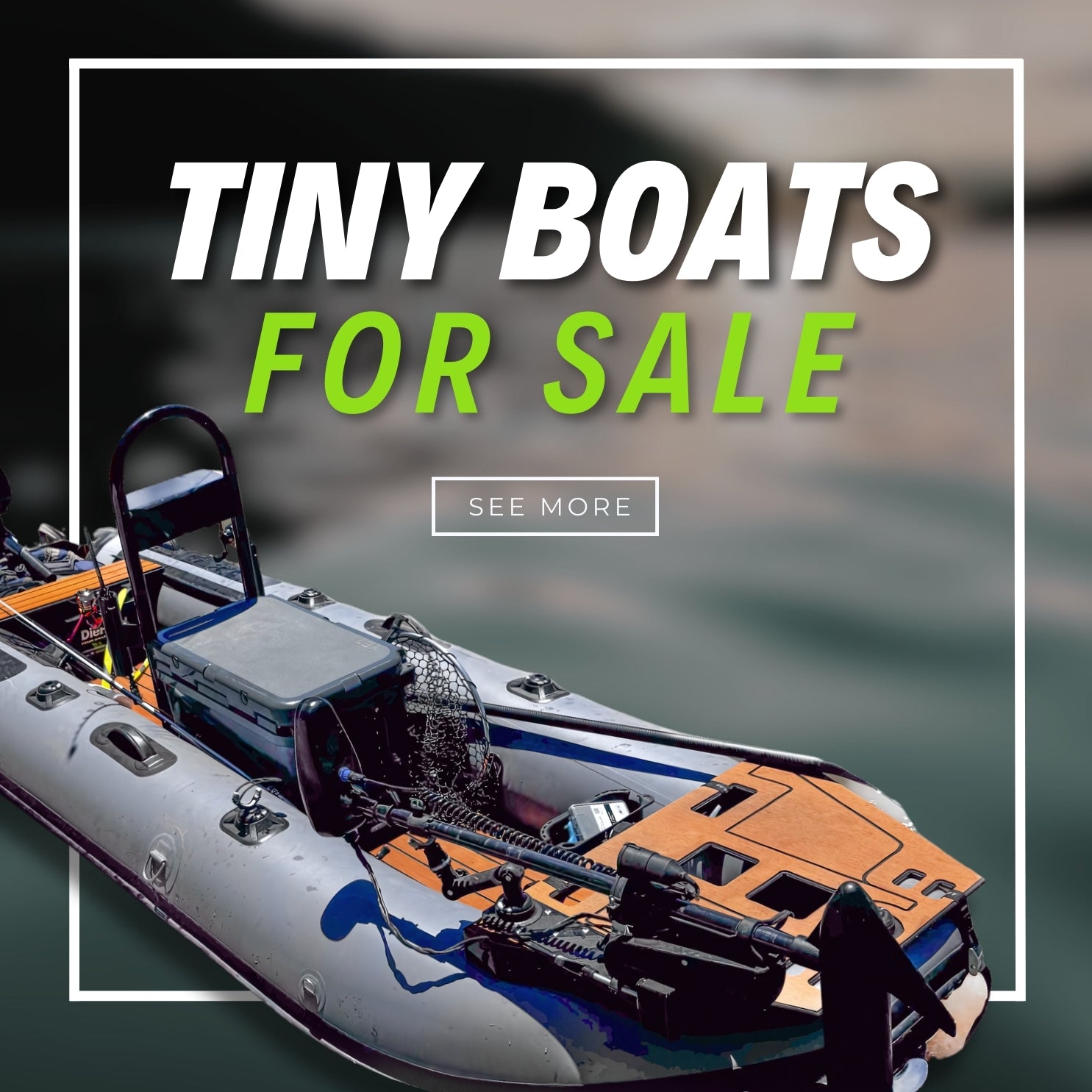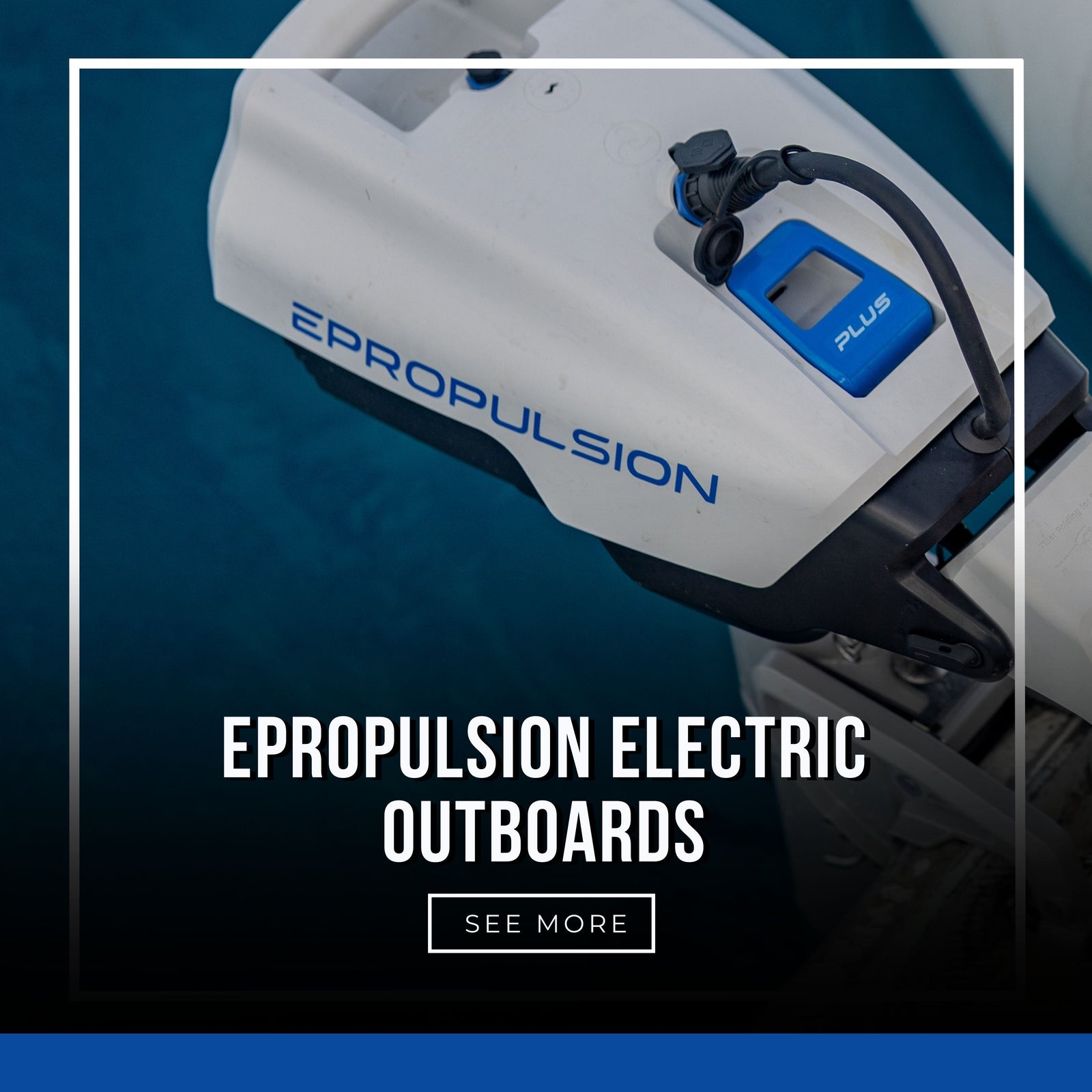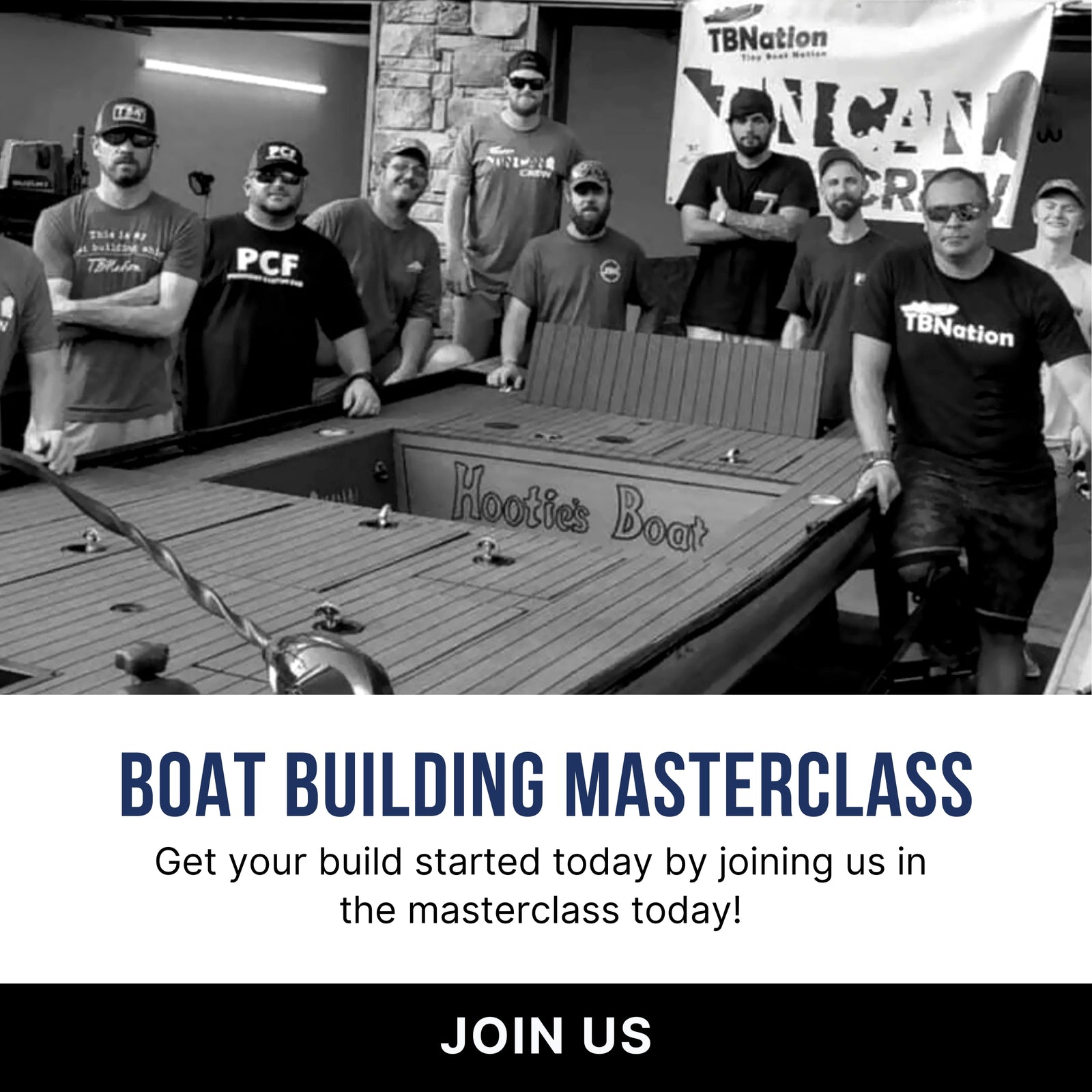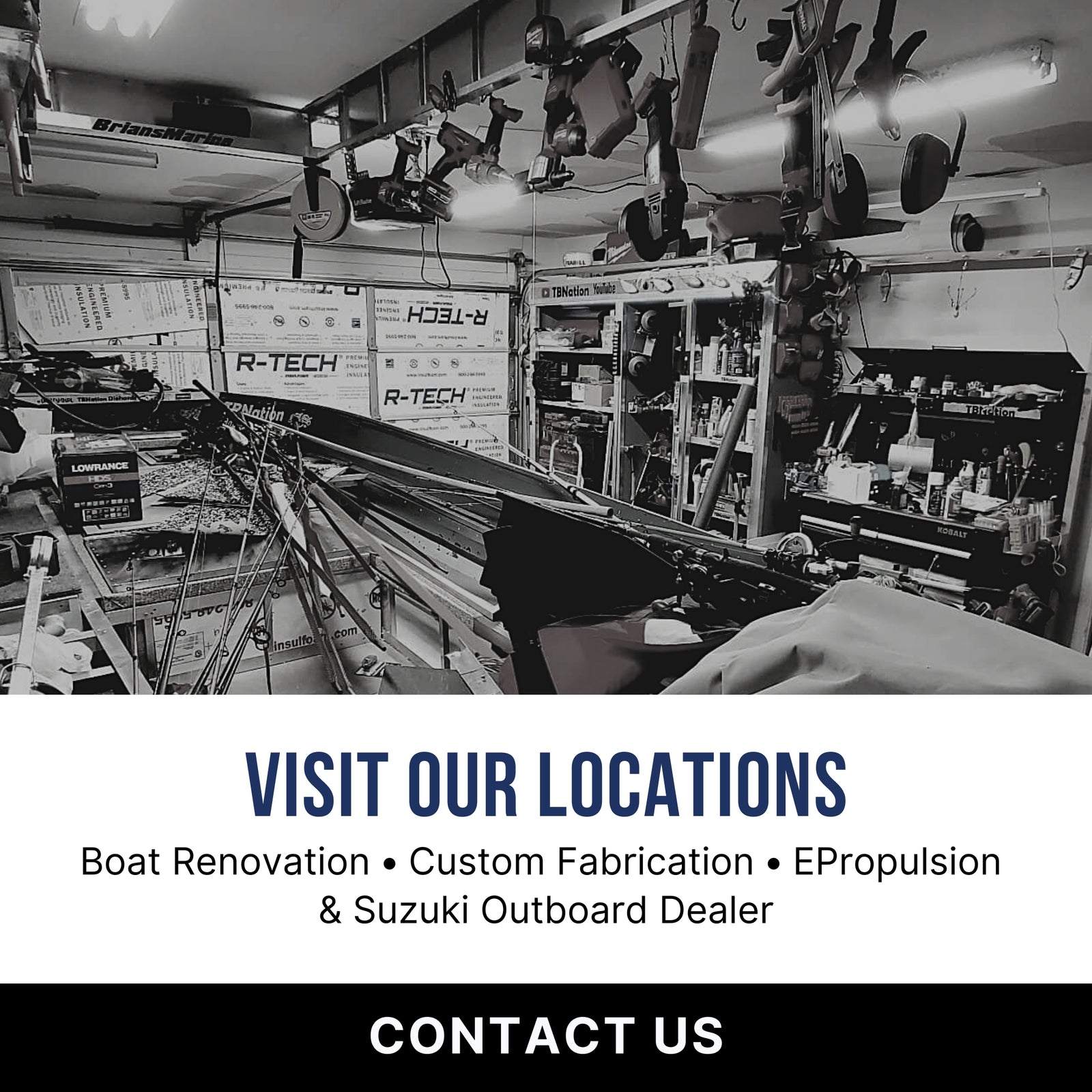Your Cart is Empty
Please select the article in settings
Pond Prowler 8 'Monster' Conversion: A Comprehensive Guide to Transforming Your Plastic Bass Boat
The Tiny Boat Nation team takes on the challenge of converting a humble Pond Prowler 8 into a formidable "monster" plastic bass boat. For DIY enthusiasts and fishing aficionados alike, this project offers a step-by-step guide to transforming a simple plastic boat into a customized fishing machine. In this article, we’ll explore the entire process, from initial planning and material selection to the final touches and water testing, offering tips, insights, and reflections along the way.
Project Planning and Strategy
Initial Design Considerations
Before any actual work begins, the most crucial step in any DIY project is thorough planning. The main objective of this conversion was to enhance the functionality of the Pond Prowler without compromising its stability or safety on the water. The team had to ensure that every addition, from the deck layout to the storage compartments, was both practical and durable.
The design phase involved sketching out potential layouts and considering the best use of space. It was important to plan for adequate storage, comfortable seating, and easy access to essential tools and equipment. The goal was to maximize the boat's utility while maintaining its lightweight and maneuverable characteristics.
Material Selection
Choosing the right materials is critical for the success of any conversion project. For this Pond Prowler 8 conversion, the team opted for lightweight aluminum framing to ensure the boat remained easy to handle while providing the necessary support for the deck and other features. High-quality EVA foam was selected for the decking, offering both comfort and durability. The team also chose resin coatings to protect the wood components from water damage, ensuring longevity.
Budget Planning
Converting a boat can be expensive, so careful budget planning was essential. The team outlined the expected costs for materials, tools, and additional components, such as the fish finder and trolling motors. By setting a clear budget from the outset, they could track expenses and make informed decisions about where to save and where to splurge.
Building the Deck Layout

Creating the Deck Frame
The deck frame is the foundation of the entire conversion. It needed to be sturdy enough to support both the fisherman and any additional gear while also being lightweight to maintain the boat’s overall maneuverability. The team began by measuring and cutting the aluminum framing, then assembling it to create a solid base for the decking.
Cutting and Installing Drop-In Lids
One of the key features of this conversion was the inclusion of drop-in lids for storage compartments. These lids needed to be both functional and easy to access. The team carefully measured and cut the openings for these lids, ensuring a precise fit. Once the openings were made, the lids were installed using tracks, allowing them to slide smoothly in and out.
Deck Leveling Techniques
A level deck is crucial for maintaining balance and ensuring that water doesn’t pool in unwanted areas. The team employed a variety of techniques to achieve a perfectly level deck, including shimming and adjusting the framing as needed. This step was vital for both the boat’s performance and the comfort of those on board.
Advanced Modifications
Creating Dry Storage Compartments
Dry storage is a must-have for any serious fisherman. The team focused on creating spacious and secure compartments that could keep gear dry even in the wettest conditions. These compartments were integrated into the deck, with custom drop-in lids providing easy access while keeping water out.
Resin Coating the Deck for Durability
To protect the wooden components of the deck, the team applied a resin coating. This not only provided a waterproof barrier but also added a layer of protection against wear and tear. The result was a durable, long-lasting deck that could withstand the rigors of frequent use.
Applying EVA Foam Boat Decking (Orthodek)
For the finishing touch, the team installed EVA foam boat decking, known as Orthodek. This material is both comfortable underfoot and resistant to the elements, making it ideal for a fishing boat. The foam was applied in large sheets, then trimmed and routed for a clean, professional look.
Installation of Additional Features
Subfloor Installation
To further improve the boat’s stability and durability, the team installed a subfloor beneath the main deck. This subfloor added an extra layer of protection and helped to distribute weight more evenly across the boat, enhancing its overall performance.
Fabricating End Caps
The end caps were another important feature, providing both protection and aesthetic appeal. These caps were custom-fabricated to fit the boat’s unique dimensions, ensuring a snug and secure fit. They helped to prevent water from entering the boat’s interior, adding to the overall watertight integrity.
Installing the 'Troll & Find' Fish Finder Mount
Fishing is all about finding the right spot, and a fish finder is an essential tool for that task. The team installed a custom fish finder mount, designed to be both stable and adjustable. This mount allowed the fish finder to be positioned for optimal viewing while remaining securely in place during travel.
Installing the Humminbird Piranha Fish Finder
With the mount in place, the team installed the Humminbird Piranha fish finder. This device provides real-time data on underwater conditions, helping the fisherman locate and track fish with ease. The installation was straightforward, with the team carefully routing the cables and securing the unit for a clean, professional finish.
Testing and Evaluation

Testing the Pond Prowler in Northern Arizona
With the conversion complete, it was time to test the Pond Prowler in real-world conditions. The team took the boat to the waters of Northern Arizona, where they put it through its paces. The testing phase included evaluating the boat’s stability, maneuverability, and overall performance in various conditions.
Analyzing the Project’s Successes and Challenges
After testing, the team conducted a thorough analysis of the project. They identified what worked well, such as the sturdy deck and efficient storage compartments, as well as areas that could be improved. This reflection provided valuable insights for anyone looking to undertake a similar project.
Evaluating the Performance of the Trolling Motors
The team tested several trolling motors during the conversion, evaluating their performance in terms of speed, power, and efficiency. This section of the article provides a detailed review of each motor, helping readers make informed decisions about which motor might be best for their own boats.
Comparing the Pond Prowler with Other Boats (e.g., Yak Killer)
In addition to testing the Pond Prowler, the team compared it with other popular boats, such as the Yak Killer. This comparison highlighted the strengths and weaknesses of each boat, providing a balanced perspective for potential buyers or DIY enthusiasts.
Reviewing the Final Results
The final results of the Pond Prowler conversion were impressive. The boat performed well in all tests, with the modifications providing significant improvements in both functionality and comfort. The team was particularly pleased with the deck layout and storage solutions, which exceeded their expectations.
Budget Breakdown

Detailed Cost Analysis
One of the most important aspects of any DIY project is cost. In this section, the team provides a detailed breakdown of the expenses involved in the Pond Prowler conversion. From materials and tools to additional features like the fish finder, every cost is accounted for. This analysis helps readers understand the financial commitment required for such a project and offers tips for keeping costs under control.
Evaluating the Value for Money
In addition to breaking down the costs, the team evaluates the overall value for money of the Pond Prowler conversion. They consider whether the improvements made were worth the investment and how the final product compares to other boats on the market. This evaluation provides readers with a clear sense of the project’s cost-effectiveness.
Final Thoughts and Lessons Learned
Reflections on the Conversion Process
As the project comes to a close, the team reflects on the entire process, from initial planning to final testing. They discuss what went well, what challenges they faced, and what they would do differently if they were to start over. This reflection provides valuable insights for anyone considering a similar conversion.
What Could Have Been Done Better
No project is without its challenges, and the Pond Prowler conversion was no exception. The team discusses areas where they could have improved, such as more efficient use of materials or better time management. These lessons learned are invaluable for DIY enthusiasts looking to avoid similar pitfalls.
Final Thoughts on the Pond Prowler Conversion
In conclusion, the Pond Prowler 8 "Monster" conversion was a significant success. The boat’s functionality, comfort, and performance were all greatly enhanced by the modifications made. The team is confident that this guide will inspire and assist others in transforming their own plastic bass boats into custom fishing machines.
Join Our VIP List
Join the Tiny Boat Nation VIP Members List.
It's Free! Stay Up To Date With Announcements, Product Give Aways, News and Promotions.









